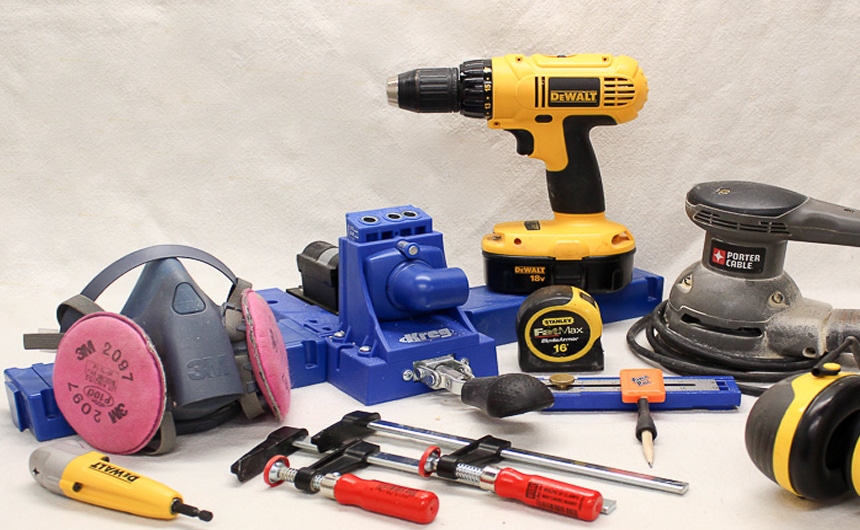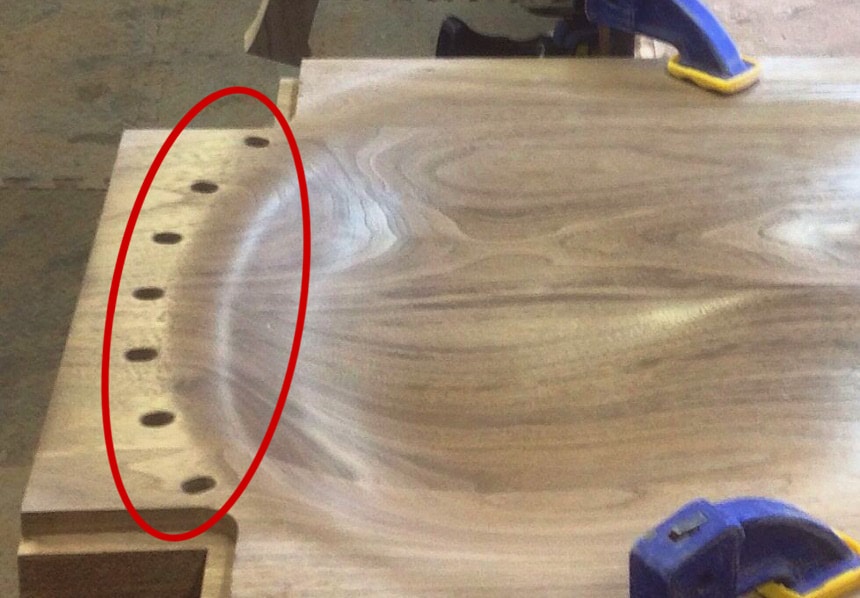



Making a rocking chair is considered to be one of the most intimidating projects for a DIYer. Any small mistake could affect the balance making it unusable. However, it is still possible for anyone who wants to take up the challenge. Besides, the idea of relaxing on a rocking chair on your porch while watching the sun set is too good to miss out on.
If you’re interested in learning how to make a rocking chair, we’ve got you covered in the sections below. We’ve highlighted the equipment you need, the type of wood to use, and even how to work the measurements, so you get the best results.
Part of the reason why most people can’t figure out how to make a rocking chair is that they don’t know how it works. As such, designing and building one that will rock the way you want it to becomes an uphill task. That said, the workings of a rocking chair can be summarized into a few words: the center of gravity Trusted Source center of gravity | Definition & Facts | Britannica Center of gravity, in physics, an imaginary point in a body of matter where, for convenience in certain calculations, the total weight of the body may be thought to be concentrated. In a uniform gravitational field, the center of gravity is identical to the center of mass. www.britannica.com .
Everything else could be built to perfection, but if the center of gravity is in the wrong position, the chair won’t work the way you want it to. So how do rocking chairs work?
First, they have to be built to the requirements of all the other types of chairs. This means they need to be comfortable and structurally sound in addition to looking good. If you’ve taken care of that, you then need to tweak the relationship between the COG and the rockers on the bottom of the chair to suit your needs. Again you need to understand this relationship before you figure out how to tweak it to your needs.
The COG is where the total weight of an object is thought to be concentrated. In perfectly symmetrical bodies, the center of gravity is bound to be at the geometric center of the structure. However, rocking chairs are not symmetrical, and the COG will change depending on how the chair’s weight is distributed.
For instance, if you use denser/heavier wood as the top of the backrest while the rest of the chair is made from lighter wood, the COG will be much higher. If, on the other hand, the heaviest components of the rocking chair are the rockers, the COG is much lower on the structure.
The COG of a chair with a person seated upright is expected to be slightly in front of the naval area. However, it will shift depending on their sitting position as well. Ultimately, the goal while building the chair is to have a rocking motion that is comfortable for the person using the chair. This can only be achieved when you have the COG working in tandem with the rockers.
Having come up with a design that works, we can then tell you how to make a simple rocking chair, and we have done so below.
Another reason why rocking chairs are so intimidating to make is that they require lots of materials and equipment. As such, beginner DIYers who have little to no equipment will likely be unable to pull the project off. Listed below are the things you need before you even get started on making the chair.
 Sandpaper – 320 and 220 grit
Sandpaper – 320 and 220 gritWhen you’re done preparing the materials, you can follow the steps below on how to make a wooden rocking chair. For this, you’ll need the 50.8 × 53.3 × 4.8 cm piece of wood. Use your pencil to draw the design of your seat on the wood. It should feature a U shape where the inner side of the U is the front while the outer curve acts as the back. Of course, you don’t want to dig too deep into the front side, so the design should only feature a slight curve.
Notably, some templates for chair seats are available online, and you can likely download them for free. However, it’s also possible for you to create an original seat template. It’s also a good idea to draw it on a piece of paper before you transfer it onto the wood to ensure there are no mistakes.
You can check whether the design is symmetrical before you start cutting it. Remember, if it isn’t symmetrical, it can lead to problems with the chair’s balance. Also, one of the best types of wood to use for the seat is cherry, mainly because of its durability. After all, the seat will have to bear the weight of the user.
After that, use whatever saw you have on hand to cut out the design. While you can pull this off with a hand saw, it’s generally recommended that you use a band saw since they’re much easier to control. According to reviewers, the Makita XBP03Z band saw is by far one of the best compact band saws in the market. The exterior blade adjustment in the tool gives users the accuracy they need for the most demanding projects.
You can choose to discard the scrap pieces of wood or store them for use on different projects. Also, remember to wear safety equipment as you work to keep yourself from getting hurt.
Next, you prepare the seat for the backrest. Notably, the spindles that will hold the backrest need to be 5.7cm apart from each other. Also, they need to be ten in total. To find the right positions for them, first, you need to measure the size of the cutout.
Put your tape measure on the corner at the top of the U-shaped cutout as the starting point. Wrap the tape measure around the backside of the seat. This is also the protruding side of the U. The goal is to measure up to the other corner at the top of the cutout.
Once you’ve taken the measurement, it will be easy to locate the middle point at the back of the cutout. If, for example, the length is 70cm, you divide it by two, and the middle point should be at the 35cm mark. After you locate and mark the middle point, then you measure 2.85cm to the left and to the right and mark the respective spots.
After that, add four more spots on each side at intervals of 5.7cm each. When you finish, you should have ten spots. With the markings ready, you place the cutout under a drill press and drill holes into the markings. The WEN 4214 12-Inch is, according to previous users, a reliable drill press for such drilling operations. It even comes with a depth adjustment gauge, so you don’t drill deeper than you need to.
For those who don’t own a drill press, the handheld drill can also work. However, you need to clamp the wood down to a work table to ensure it doesn’t wiggle or move while you work.
Next, you start drilling holes on the ten markings. These holes should measure 1.6 centimeters wide and should be angled 12-degrees towards the back of the seat. Also, make sure that you drill through to the underside of the seat.

The next step when attempting to make a rocking chair out of wood is to make holes for the chair’s four legs. For the two front legs, the spots where you drill should be 10cm from the front edge of the seat and 13cm from the center. As for the back legs, they should be 38cm from the front edge and 13cm from the center.
Also, just like the holes for the backrest, you’re going to have to drill the holes for the legs at an angle. The angles for the front legs should be 5° to the front and 5° to the side. For instance, the hole on the front-right side should be angled 5° to the front and 5° to the right. The one on the front left should be angled to the front and to the left.
The back legs should be angled 5° to the side and 20° to the back. Make sure that each of these four holes is 3.2cm wide.
After that, you now differentiate the top side of the seat from the underside by digging out a recessed area. A curved draw shave Trusted Source Drawknife - Wikipedia A drawknife (drawing knife, draw shave, shaving knife) is a traditional woodworking hand tool used to shape wood by removing shavings. It consists of a blade with a handle at each end. The blade is much longer (along the cutting edge) than it is deep (from cutting edge to back edge). It is pulled or “drawn” (hence the name) toward the user. en.wikipedia.org is the best tool for the job. However, you can start by marking two inches from the edge of the chair. This will serve as a boundary showing you where to dig out and which parts to leave.
To use the draw shave, dig into the top of the wood, then follow up by pulling the blade towards you at an angle. This will cut out a chunk of the wood. You’re also advised to work from the back of the seat as you head to the front. Of course, you need to exercise extreme caution; otherwise, you may injure yourself. Protective clothing such as gloves and overalls can also help keep you safe.
Also, avoid digging too deep into the wood as that would make it brittle and easy to break.
Another part of making the seat is beveling the edge. For this, you whip out the straight draw shave. Using this tool should be similar to using the curved draw shave. You hold both handles while you dig into the edge of the wood, then pull the blade toward you. You want to target the area around the edge of your seat.
Depending on the size of the material that you want to remove from the seat, you can choose a different tool such as the band saw. When you finish up, the only thing remaining is to sand the seat. Pay particular attention to the beveled edge and the dug-out area of the seat while you do this. That said, you shouldn’t neglect the other areas either.
Once you’re done making the seat, you can move on to making the legs and spindles of the rocking chair. Here you measure and cut two 5.1cm x 5.1cm wood pieces that are 41cm long for the front legs. For the two back legs, get the same 5.1cm x 5.1cm, although this time, the length will be 33cm. Use a band saw if you can for the best results. Also, clamp the wood down, so your cuts are even.
After that, the lathe comes into play. If you’re unfamiliar with a lathe, they are tools used for spinning and shaping wood, and they’re used alongside changeable cutting tools.
Ultimately you want to shape the legs into cylindrical structures that are 4.4cm thick. You do this by attaching the strips of wood to the lathe. After that, you let the machine turn the wood while you press the flat edge of your cutting tool onto the side of the spinning wood. Working the whole surface will chip away wood pieces until you’re left with a cylinder. That said, if it’s your first time using a lathe, it might take some getting used to, although you can find some useful tips for use on YouTube.
Of course, once the wood has turned cylindrical, you’ll need to stop the lathe periodically to check the thickness with your calipers. This will ensure you don’t go past the 4.4cm required thickness.
After you ensure the piece of wood is uniform, you move on to tapering one of the ends. Measure and mark 6.4cm from the edge of the wooden pieces. Taper these ends on the lathe until they are 3.2cm thick, so they fit into the holes on the seat. Notably, you’re only going to taper one end on each piece of wood.
On the opposite/untapered end of each leg, you’re also going to need to cut slots. These slots should be smack in the middle of the legs and should measure 1.4cm wide by 6.4cm deep.
Next, you cut the spindles for the back and armrests for the chair. First, make sure the wooden pieces are 2.5cm wide by 2.5cm thick. Of course, if you’re using a band saw to cut the wood cutting the pieces of wood uniformly will be much easier to pull off.
Worth mentioning is that you should use wood that’s both durable and fairly flexible for these spindles. White ash seems to be a great option, although there are other viable options available as well. You should then cut ten 74cm long spindles that measure 2.5cm width and thickness. These will form the back of the chair.
You also want to cut two spindles for the arm supports of the chair, two for the center arm supports, and finally, two others for the front arm supports. Notably, all of these should measure 2.5cm x 2.5cm x 25cm.
You also want to turn all these spindles into cylindrical structures. However, since they are so thin, you should avoid using the lathe as it might break them. Instead, this is where you pull out the block plane. Shave off the wood while you rotate the spindle to make sure it stays even.
At some point, you’ll also need to start checking the thickness of the spindle using calipers. That said, you should stop shaving once the spindles are 1.6cm thick. Once done, you can sand both the spindles and the legs you’ve created to give them a smooth finish.
To make the back and arms, you first need to draw templates onto a piece of wood. Just like the rest of the chair, these components also need to be durable, and you can use wood from a cherry tree as well. Notably, these templates should feature a curved arc that matches the curvature on the seat.
The backrest should be 58cm long, 7.6cm tall, and 2.9cm thick. Worth mentioning is that the curve on the backrest should be along the 2.9cm thickness of the piece. Consequently, when you place the backrest upright, the user’s back should be in contact with the 7.6cm x 58cm surface area of the piece.
As for the arms, they should be 51cm long, 7.6cm wide, and 2.5cm thick. This time the curve should be along the 7.6cm width of the piece. When you install it on the chair, the 7.6cm x 51cm surface is where you should place your hands.
Remember that this curvature needs to match the curvature of the seat; otherwise, the spindles won’t fit.
Next, you drill holes through the backrest. The easiest way to know where to drill is to place the backrest on the outside curve of the seat and line it up with the holes. After that, you can mark the corresponding areas on the backrest with a pencil.
One way to make sure the marks for the holes are in the right place is to measure the distance between them. If they’re well-positioned, they should be 5.7cm apart from each other, so they match with the holes on the seat.
Notably, these holes should be 1.6cm wide and 3.8cm deep. You can only drill straight into the wood, and holding the backrest with a vice in the process should help you do that. Also, remember that you haven’t drilled the holes for the armrests.
You can then line up the sides of the seat and the armrests. This will be easy since the curves on the two structures match. After that, you clamp the two to hold them together. This will make it easier to drill through both structures so you can have matching holes. Of course, the holes should be 1.6cm wide as well. That said, the first hole should be between 2.5cm and 5.1cm from the edge of the armrest.
Drill three holes in each armrest to match the number of spindles you made. The holes on the sides of the seat should be deep, but they don’t need to go through to the underside. This will conclude the preparation stages before you start attaching the different components.
The next step is to install the arms and backrest of the chair. We will start with the latter. First, apply wood glue to the ten holes on the back of the seat. You can use a small stick or your finger as an applicator to ensure the glue is well distributed.
After that, put one of the long spindles in each hole. Notably, you can only add glue and the spindles in one hole at a time since wood glue tends to dry quickly. Push the spindles through until about 1.3cm is sticking out from the bottom of the seat. You can use the mallet if you have to.
Since you want the wood glue to set, leave the chair as is for at least 24 hours before moving on to the next step. Then you can use a flush-cut saw to cut the parts of the spindles poking out at the bottom of the seat. After that, you sand the seat.
After that, it will just be a matter of adding the backrest on top of the spindles. Remember that you have already drilled holes into the backrest. What remains is to slide the spindles attached to the seat into these holes.
If you have a hard time lining up the holes, you can use the mallet. However, since the holes are lined up perfectly with the holes on the seat below, it shouldn’t be a problem. That said, do remember to add wood glue to the holes on the backrest as well.
Adding the armrests should be another simple matter and follows a similar process. Add wood glue to the holes on the seat and insert the spindles. Let the glue dry before adding the top of the armrests. Use wood glue and a mallet if necessary to push the armrests down. About 1.3cm of the spindle should poke out at the top of the armrest.
After that, leave the glue to dry before you use a flush-cut saw on the protruding pieces. You can clamp the armrests while the glue dries to make sure they don’t go any lower.
With the backrest and armrests done, it’s now time to focus on attaching the legs. Since you already made them and drilled the holes on the seat, you just add glue and insert the legs. Use the tapered end, and since the rest of the leg is a different thickness, it won’t go too deep into the hole. You can use the mallet to push it as far as it will go.
Next, wipe off excess glue that spills out of the holes to keep your workflow neat. After the wood dries, finish up by using the flush-cut saw on the protruding pieces. By now, you’re almost done with the project. The only major part remaining is to fashion and add the rockers to the bottom of the chair.
Start by making a template for the rockers on a piece of wood. You can look up several designs on the internet to see which one suits you and your chair. However, it should be 91cm long, 10cm tall, and 1.6cm thick. How you fashion it will mostly be up to you but do not forget the curve at the bottom; otherwise, the chair won’t rock.
Worth mentioning is that the curve should be no more than 45°. This has the potential to ruin the experience of the rocking chair. Also, the curve should be at the front of the rockers. You may also want to keep the area at the back of the rocker straight to keep the chair from rocking too far back.
You’re advised to use the same type of wood for the rockers as you did for the seat. A band saw will make light work of cutting the template out of the wood.
After that, clamp the two rockers together, then put your block plane tool to work. The idea is to smooth out the curve at the bottom while ensuring it’s uniform on both rockers.
Apply wood glue to the slots you cut on the bottom ends of the chair legs. After that, slide the rockers into these slots. Make sure the rockers go all the way in.
After that, drill holes through the legs that also go through the attached rockers. These holes should be ¼” or 0.64cm. Since this is a guide on how to make a wooden rocking chair, you should add dowels to these holes rather than mechanical fasteners.
At this point, all that’s left is to sand the whole chair then apply varnish or some paint to suit your needs. That said, if you find the backrest too stiff, you can purchase and add a massage chair pad to make the chair more comfortable.
Learning how to make a rocking chair does have its fair share of challenges. You might not even get it right on your first try. However, for an avid DIYer, taking on a challenging project is bound to be fun. We’ve already given you a winning formula in the write-up above. Now it’s up to you to attempt making the chair.





